Visual Detection of Detectable Warning Materials by Pedestrians with Visual Impairments - Final Report
2.6 Conspicuity Ratings
Participants rated the conspicuity of each detectable warning that they could see on a numerical scale that ranged from 1 (very unlikely to attract my attention on this type of sidewalk) to 5 (very likely to attract my attention on this type of sidewalk). A rating of zero (or “X” in the figures below) was assigned by the experimenter to those detectable warnings that were not detected from the viewing distance of 2.44 m (8 ft). Figure 21 through Figure 33 show the distributions of conspicuity ratings provided by participants. Each figure includes four separate distributions and represents all 50 participants’ responses to a single detectable warning on one of the four sidewalk types. Thus, for each sidewalk, the sum of the heights of the bars is 100 percent. Distributions with many responses in the 4 or 5 categories indicate high conspicuity ratings and distributions, while many responses in categories X, 1, and 2 indicate low conspicuity ratings or an inability to see the detectable warning at all. Results for most detectable warnings varied between the different sidewalks. However, the three black-and-white patterned detectable warnings received consistently high conspicuity ratings on all four sidewalks.
We compared conspicuity ratings for the set of detectable warnings using the same non-parametric statistical procedure that we used to compare detection distances (described in Section 2.5.1). The results of these analyses are summarized in Table 10 through Table 13. Each of these figures corresponds to one of the four sidewalk types tested. The row and column headings refer to the detectable warning colors tested. The results of the pairwise comparisons between detectable warnings listed in rows and those listed in columns are shown at the intersection of the appropriate row and column. The double “greater than” symbol (>>) indicates that the detectable warning color heading the row was rated significantly higher in conspicuity than the detectable warning color heading the column based on a conservative criterion where (p < .000641). The single “greater than” symbol (>) indicates that the detectable warning color heading the row received significantly greater conspicuity ratings than the detectable warning color heading the column based on a less conservative criterion where (p < .05). Similarly, the double “less than” symbol (<<) and single “less than” symbol (<) indicate that the detectable warning color heading the row received significantly lower conspicuity ratings than the detectable warning color heading the column based on the two statistical criteria described above. The notation “n.s.” indicates that observed differences in conspicuity ratings were not statistically significant (p > = .05).
The patterns of statistically significant differences for conspicuity ratings shown in Table 10 through Table 13 are similar, but not identical, to the patterns of statistically significant differences for detection distances shown in Table 6 through Table 9. As expected, detectable warnings that are more conspicuous are generally seen from greater distances. In some cases, two detectable warnings that do not differ significantly in detection distance on a particular sidewalk may differ significantly in conspicuity ratings on that sidewalk. In other cases, two detectable warnings that do not differ significantly in conspicuity ratings may differ significantly in detection distance.
For conspicuity ratings, 202 of the 312 pairwise comparisons summarized in Table 10 through Table 13 revealed statistically significant differences with the conservative decision criterion (p < .000641) and an additional 60 statistically significant differences are revealed by the less conservative criterion (p < .05). For the visual detection distance measure, only 164 of the 312 pairwise comparisons summarized in Table 6 through Table 9 revealed statistically significant differences (p < .000641) with an additional 42 significant differences revealed by the less conservative criterion (p < .05). These results suggest that in the present study conspicuity ratings were a more sensitive measure than visual detection distance for evaluating the visibility of detectable warnings. However, it is possible that the detection distance measure would have been more sensitive if viewing distances greater than 7.92 m (26 ft) (and less than 2.44 m (8 ft)) were included in the experimental protocol.

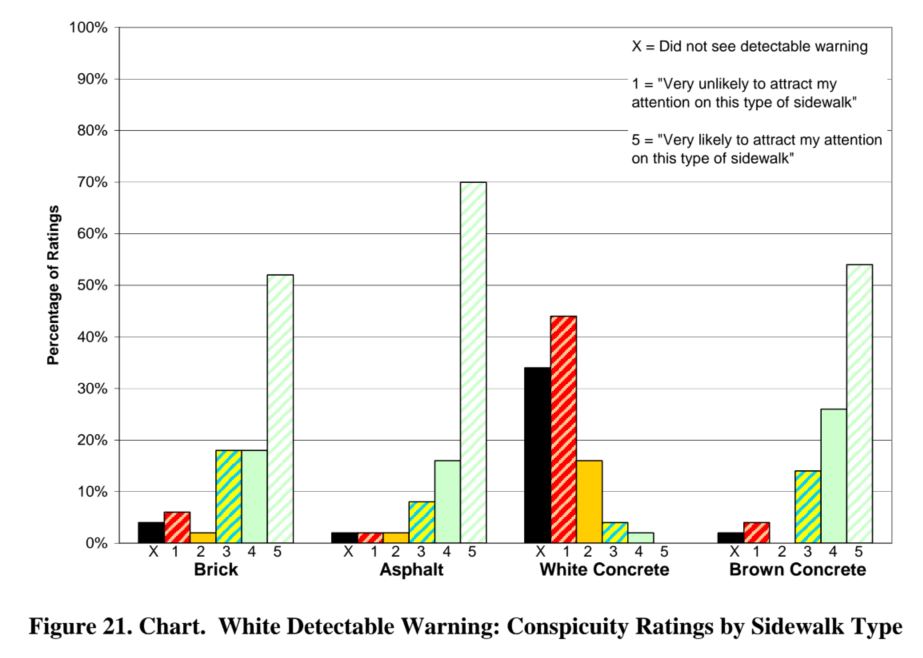
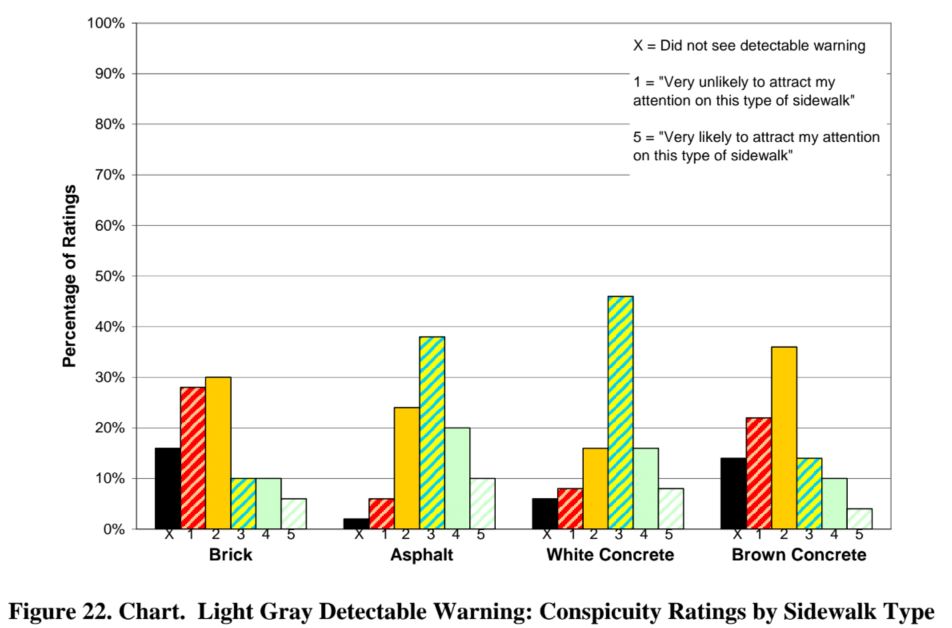
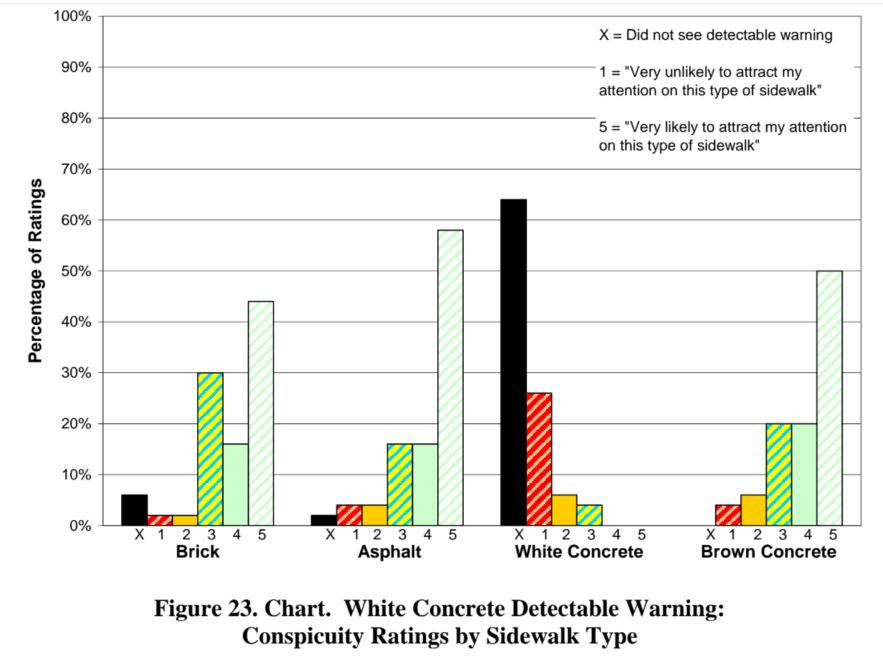
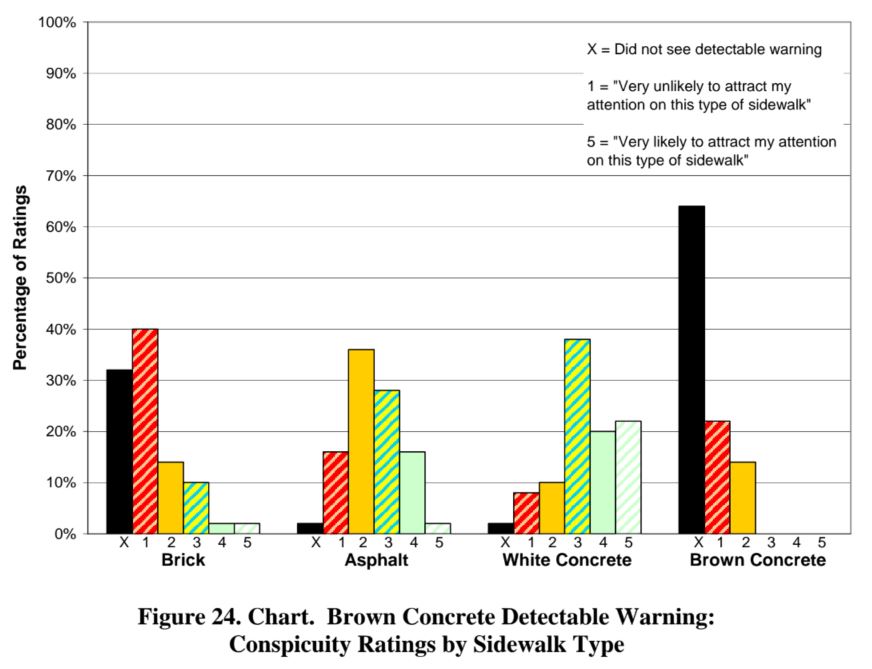
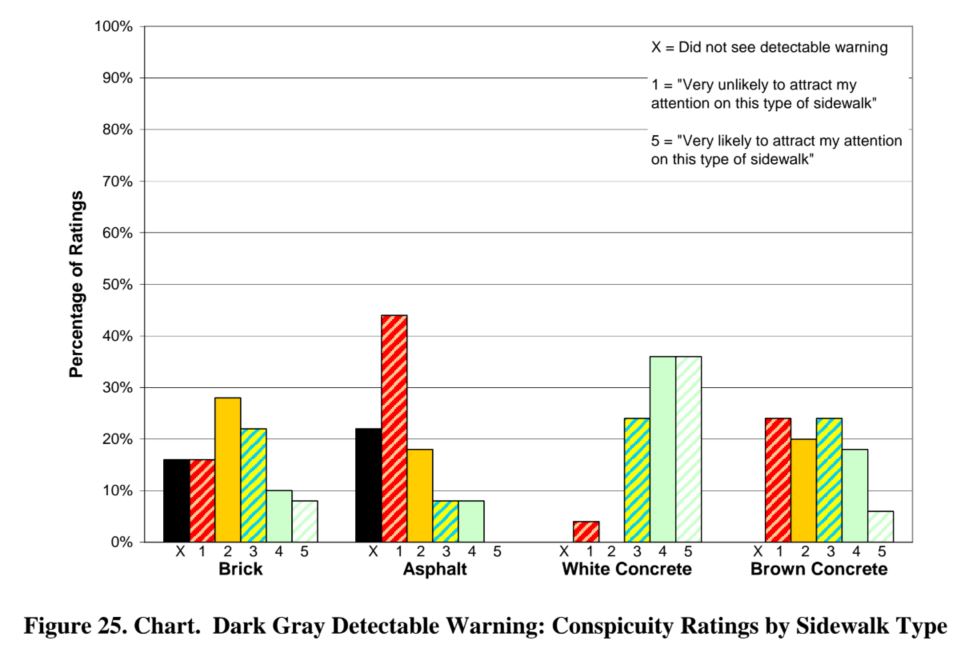
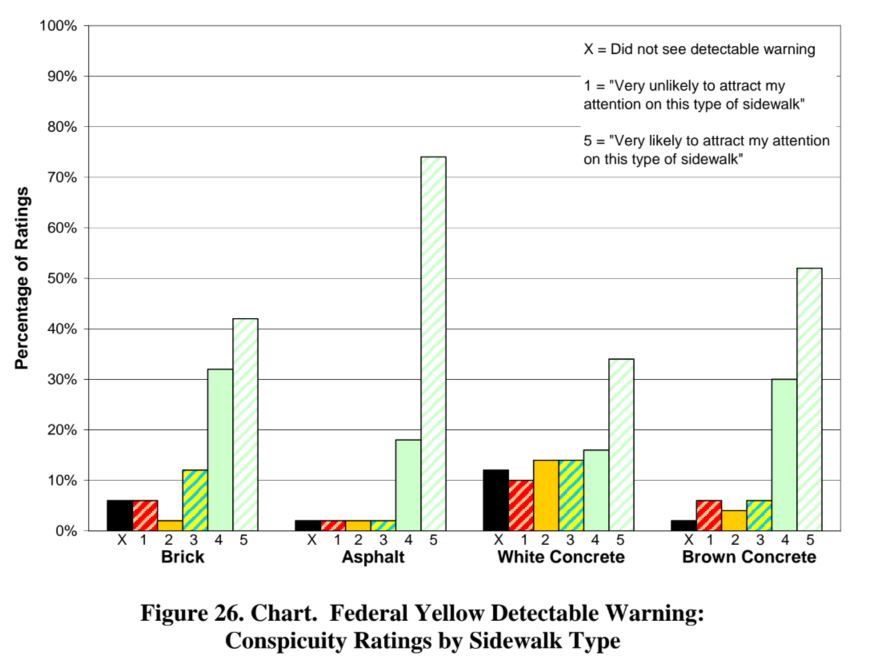
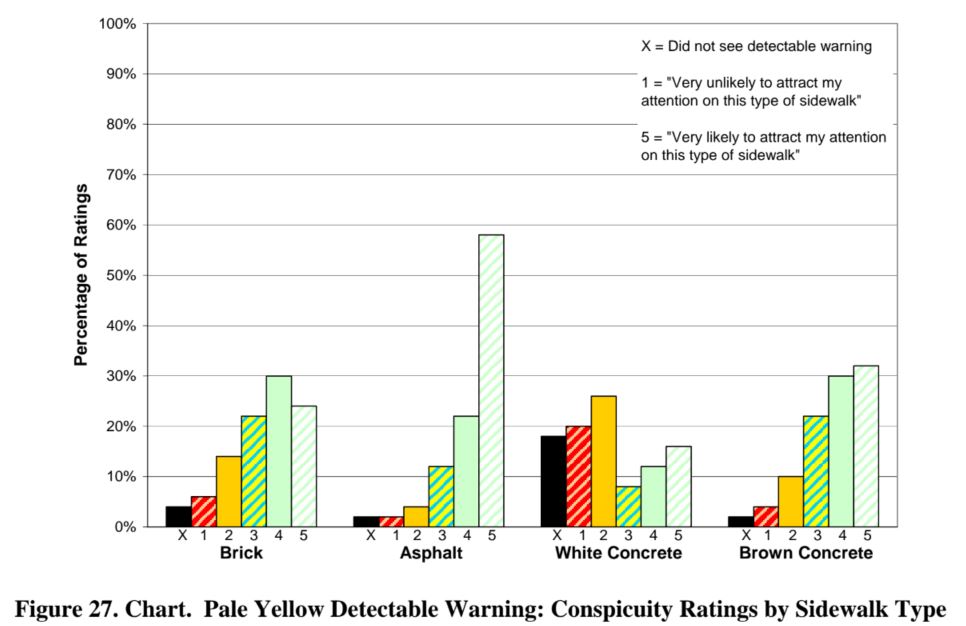
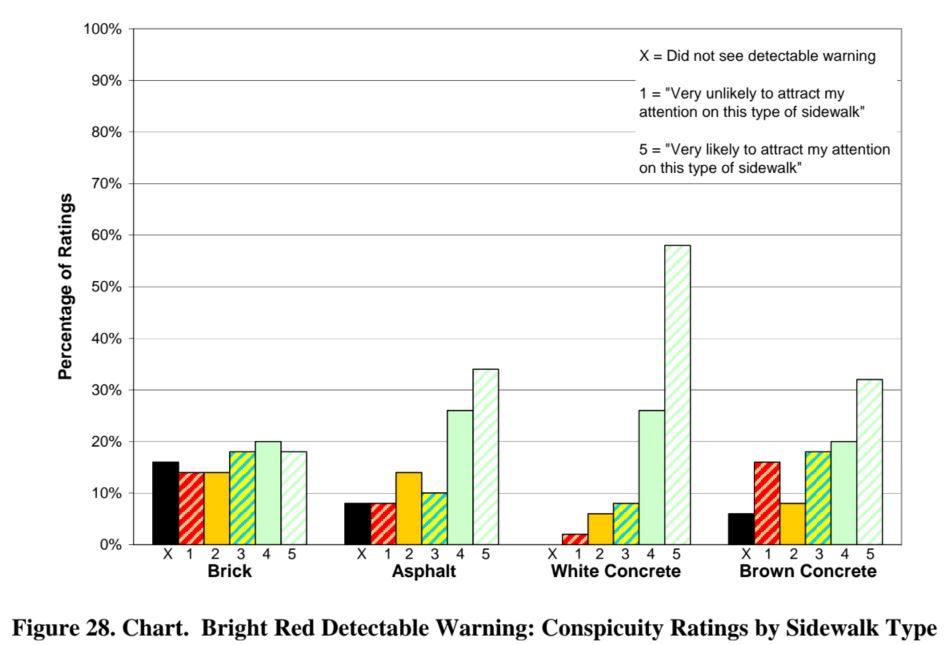
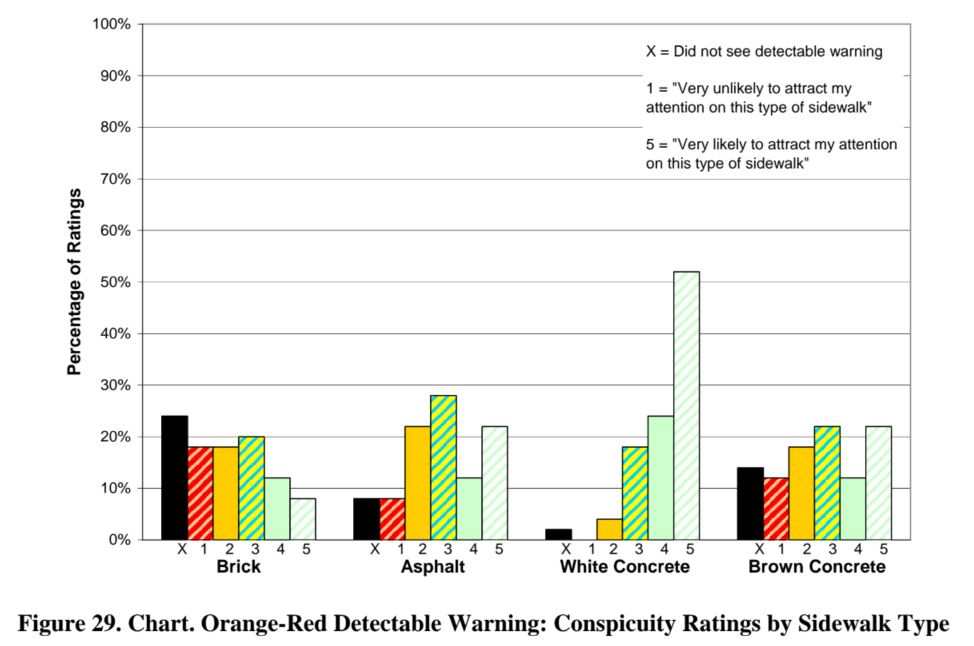
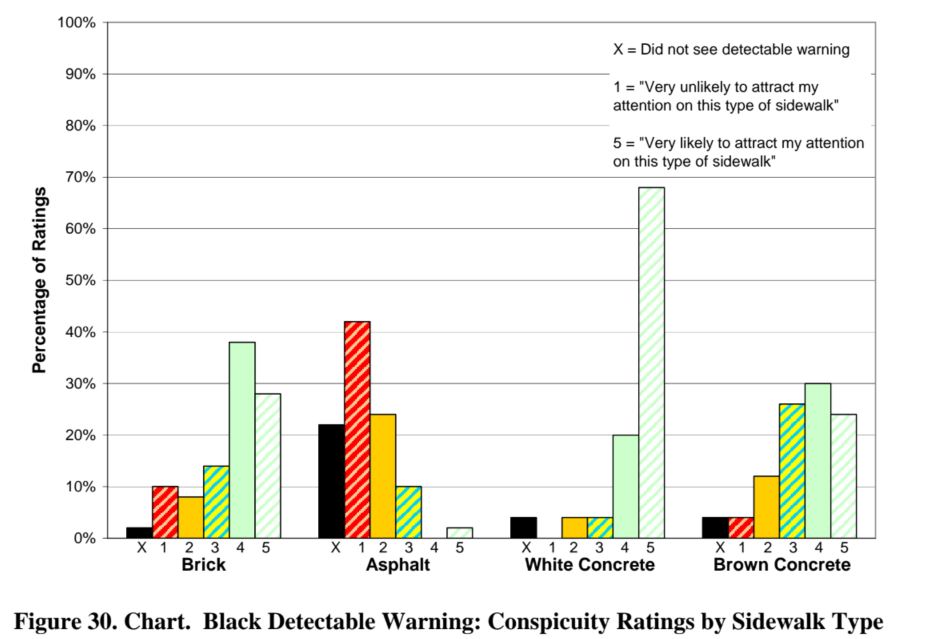
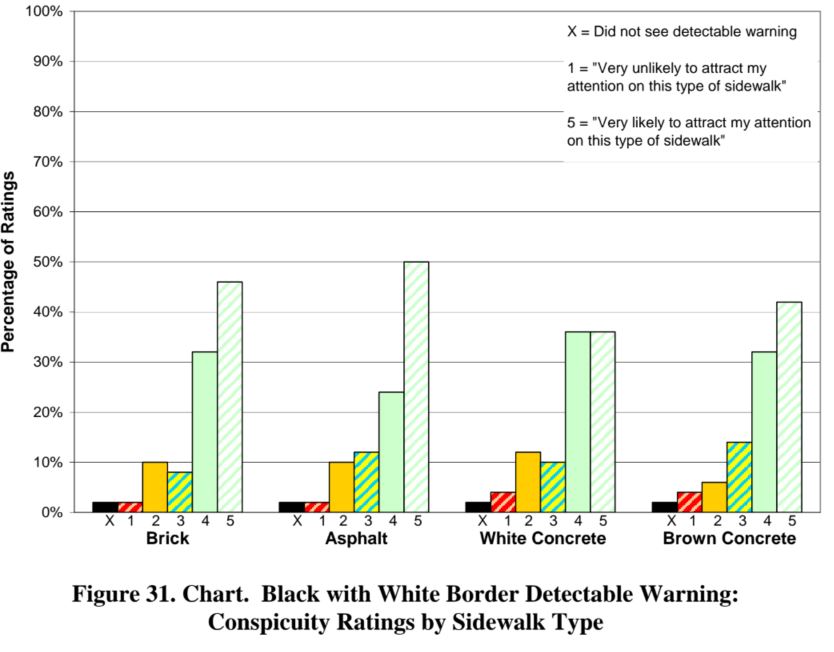
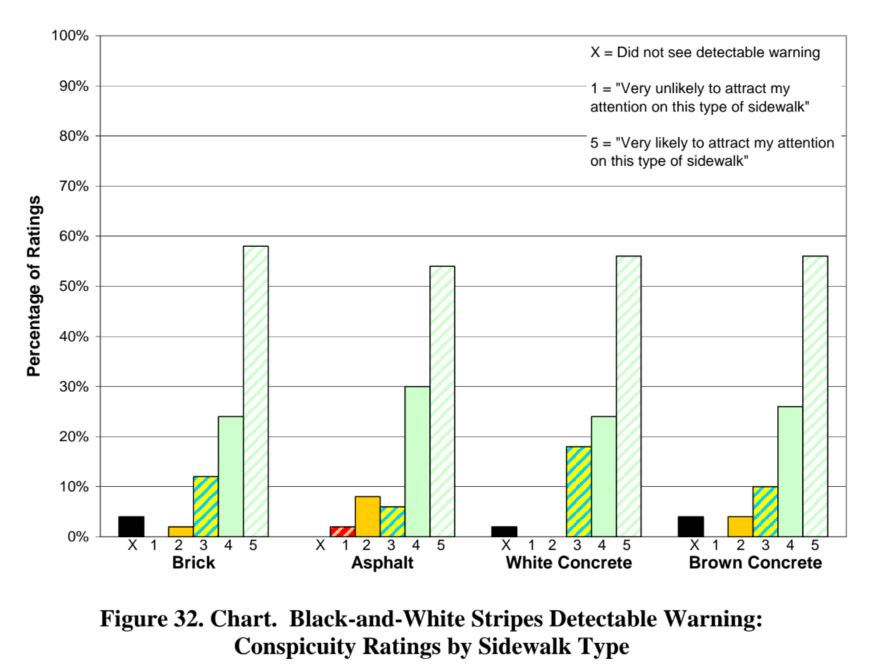
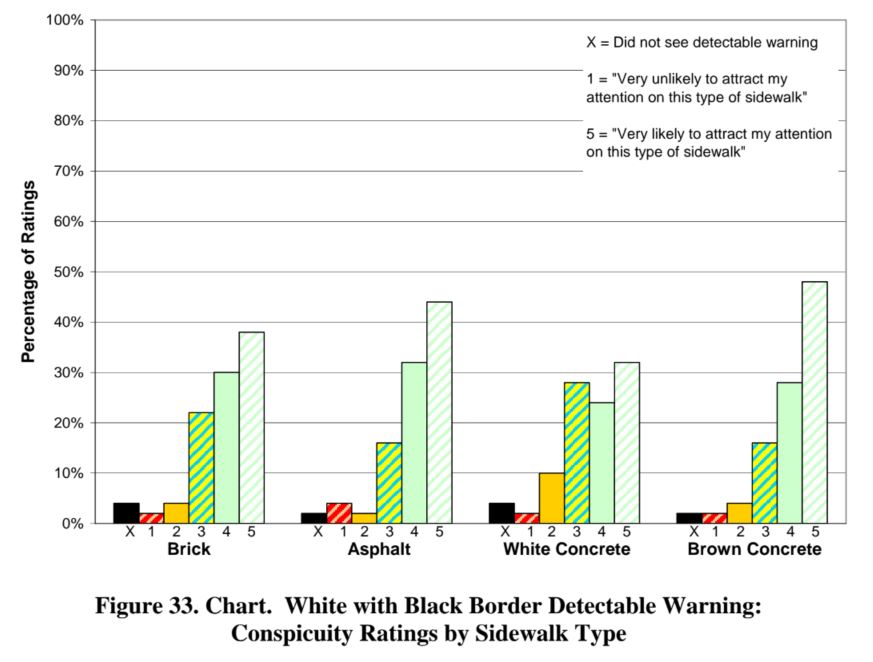
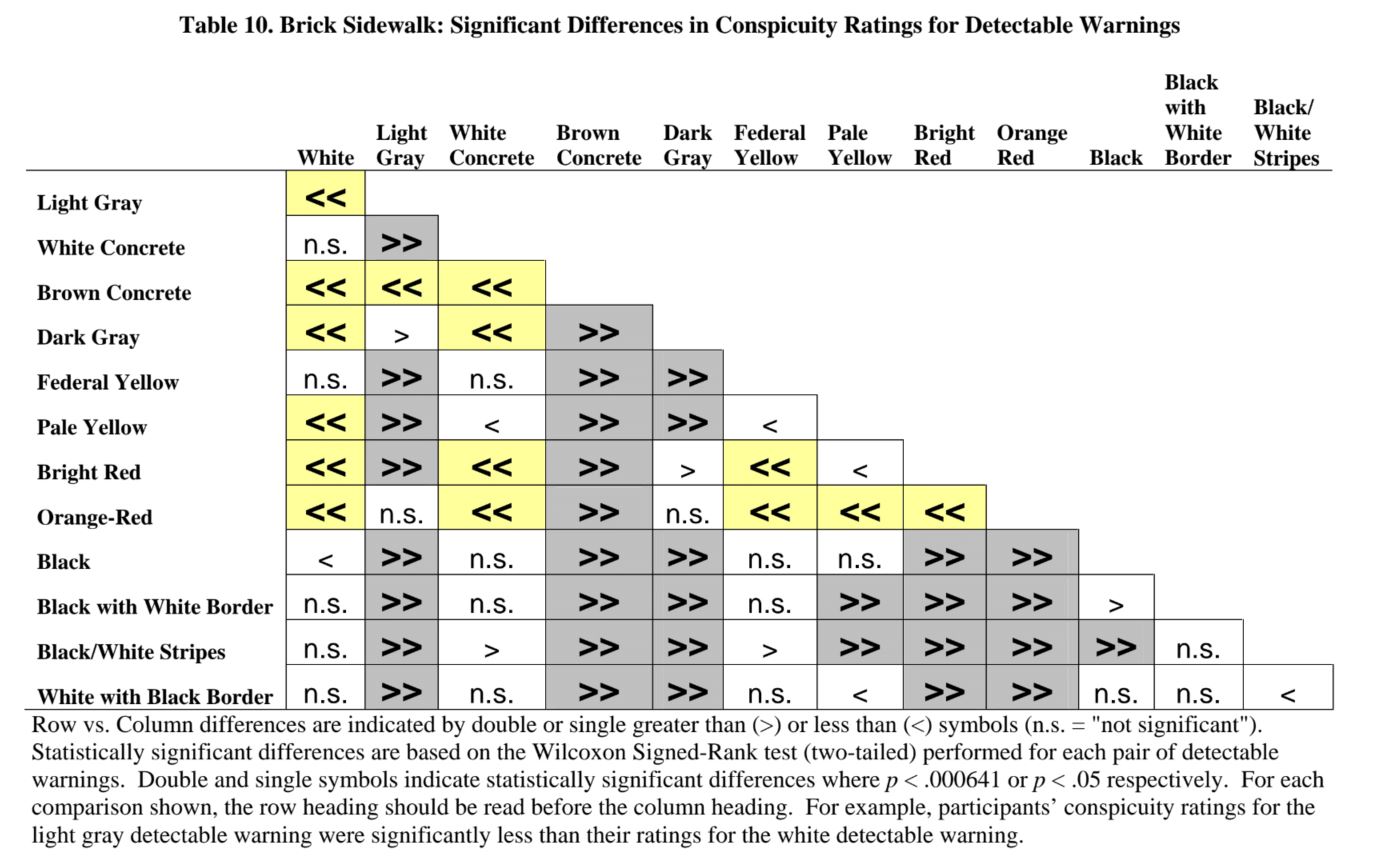
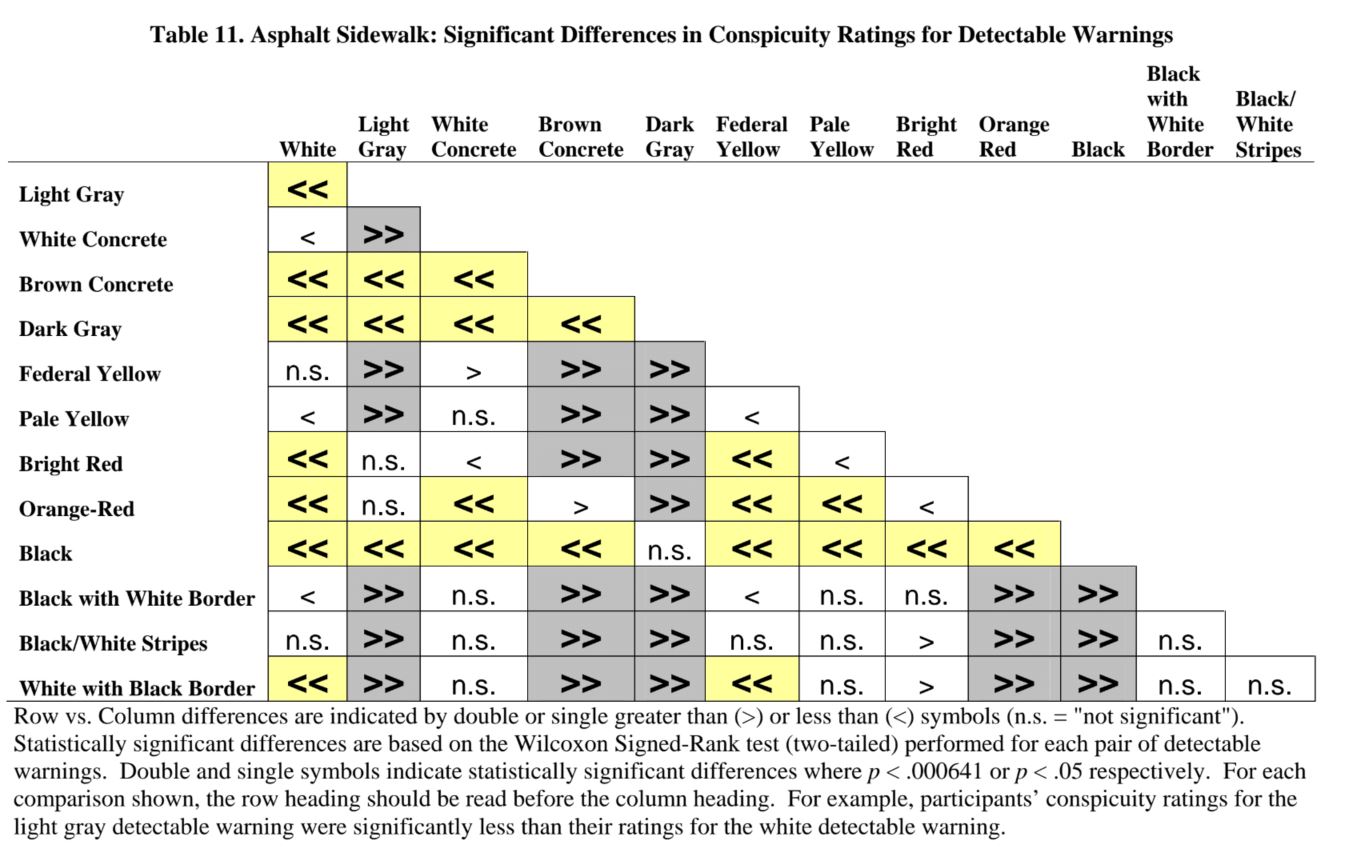
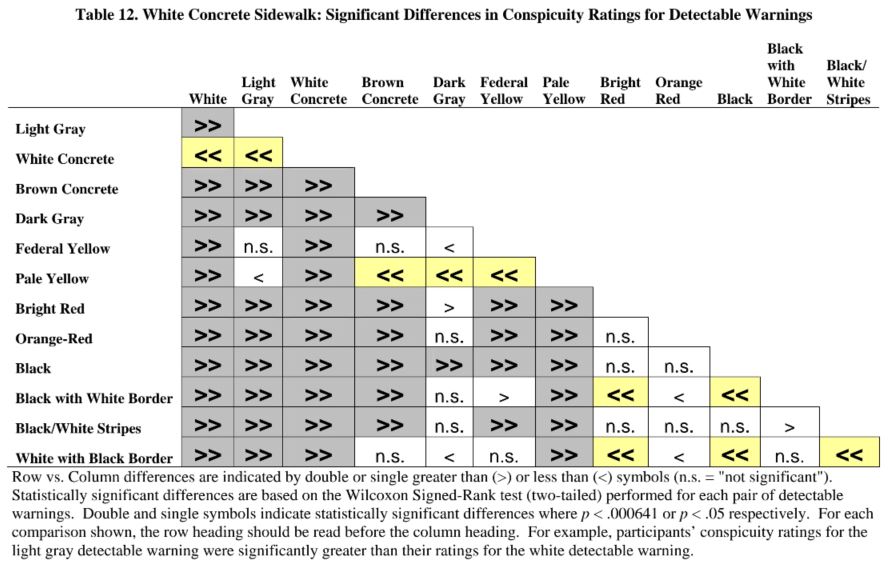
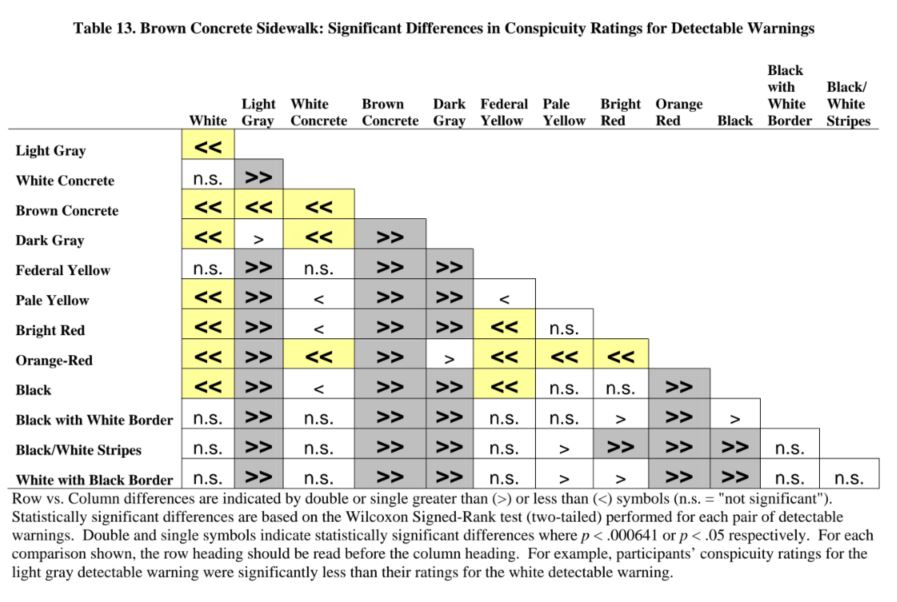
User Comments/Questions
Add Comment/Question